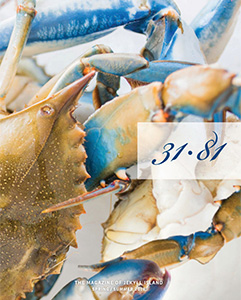Whether you’re looking for fun in the sun, solitude in nature, an amazing photo op, or tonight’s dinner, Jekyll’s broad coast awaits
By Bill Warhop
It’s easy to get to Jekyll Island—and easy to lose yourself once there.
“On the right beach at the right time, you really can feel like you have it all to yourself,” says Ben Carswell, conservation director for the Jekyll Island Authority. Jekyll is one of only four barrier islands in Georgia that allow driving (all others are served by ferry), but cars are almost superfluous once you’ve arrived. With an off-street bike path and nary a hill in sight, Jekyll always has a beach within an easy stroll. From remnant forests to undulating dunes to oyster-rich estuaries, the coastline is rich with biodiversity, its very shape and constitution a lesson in marine geology and ecology. While there are multiple entry points across Jekyll’s ten miles of unbroken shore, we’ve highlighted four distinct stretches of sand for the unique experiences they offer.
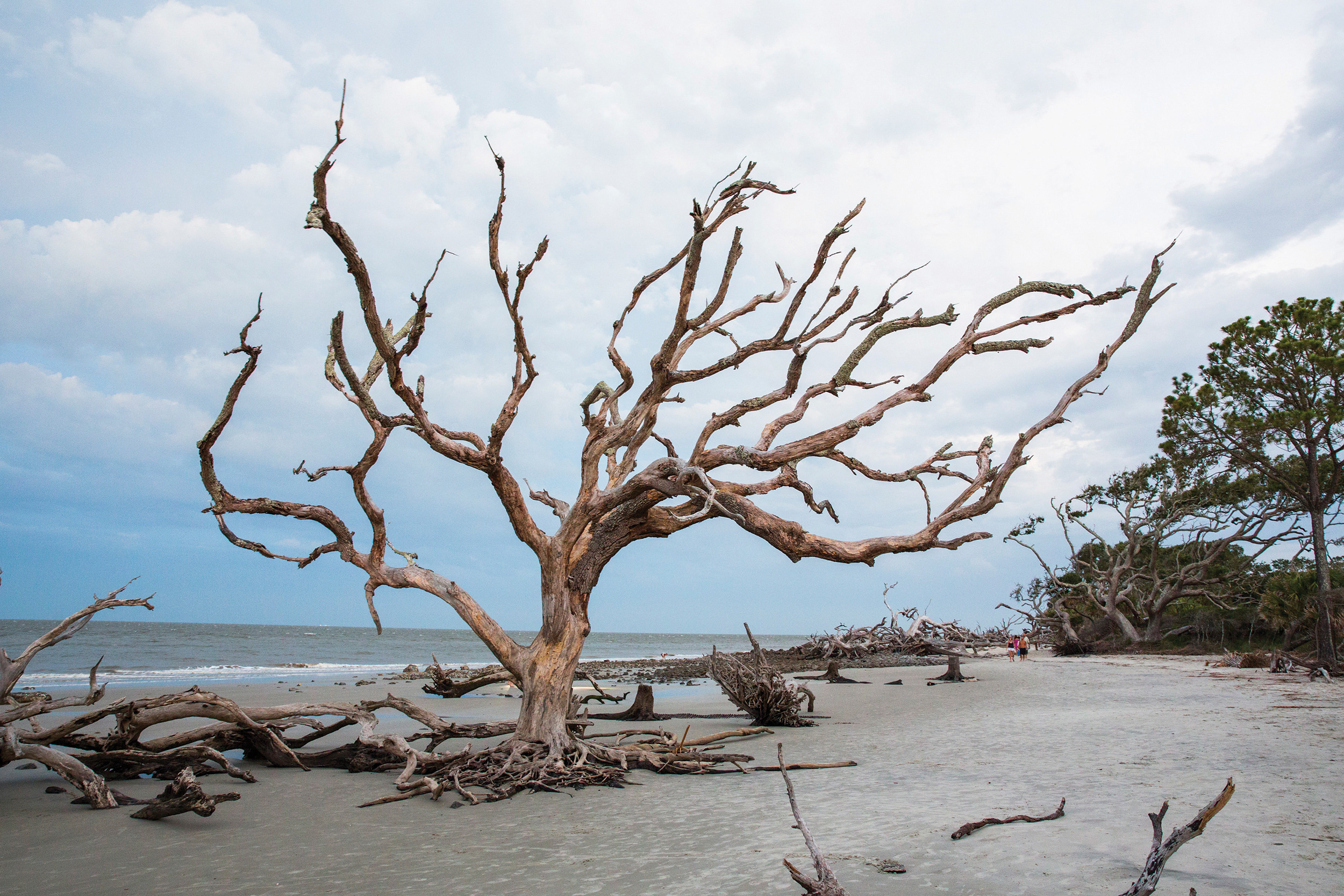
Monuments
Driftwood Beach curves like a shepherd’s crook along the island’s upper end. Here, Atlantic currents pound the forest’s edge, slowly exposing tree roots and toppling the arboreal natives closest to the surf. The process leaves behind a gnarled boneyard of live oak, pine, and cedar.
Don’t let the gentle “Driftwood” moniker mislead you.
Most of these relics are whole trees—or at least the core of them. Their roots splay like tentacles, and their limbs form snarled thickets that would keep Prince Charming out of Sleeping Beauty’s castle. A parking area about a third of a mile from the north end of Villas by the Sea leads to skeletal formations that stretch a quarter mile in each direction. Because it’s farther from the main tourist hub, Driftwood Beach often remains quiet despite its popularity. The St. Simons Lighthouse across the sound, visible on any clear day, and the occasional brightly colored hammock strung between limbs may be your only reminders of civilization.
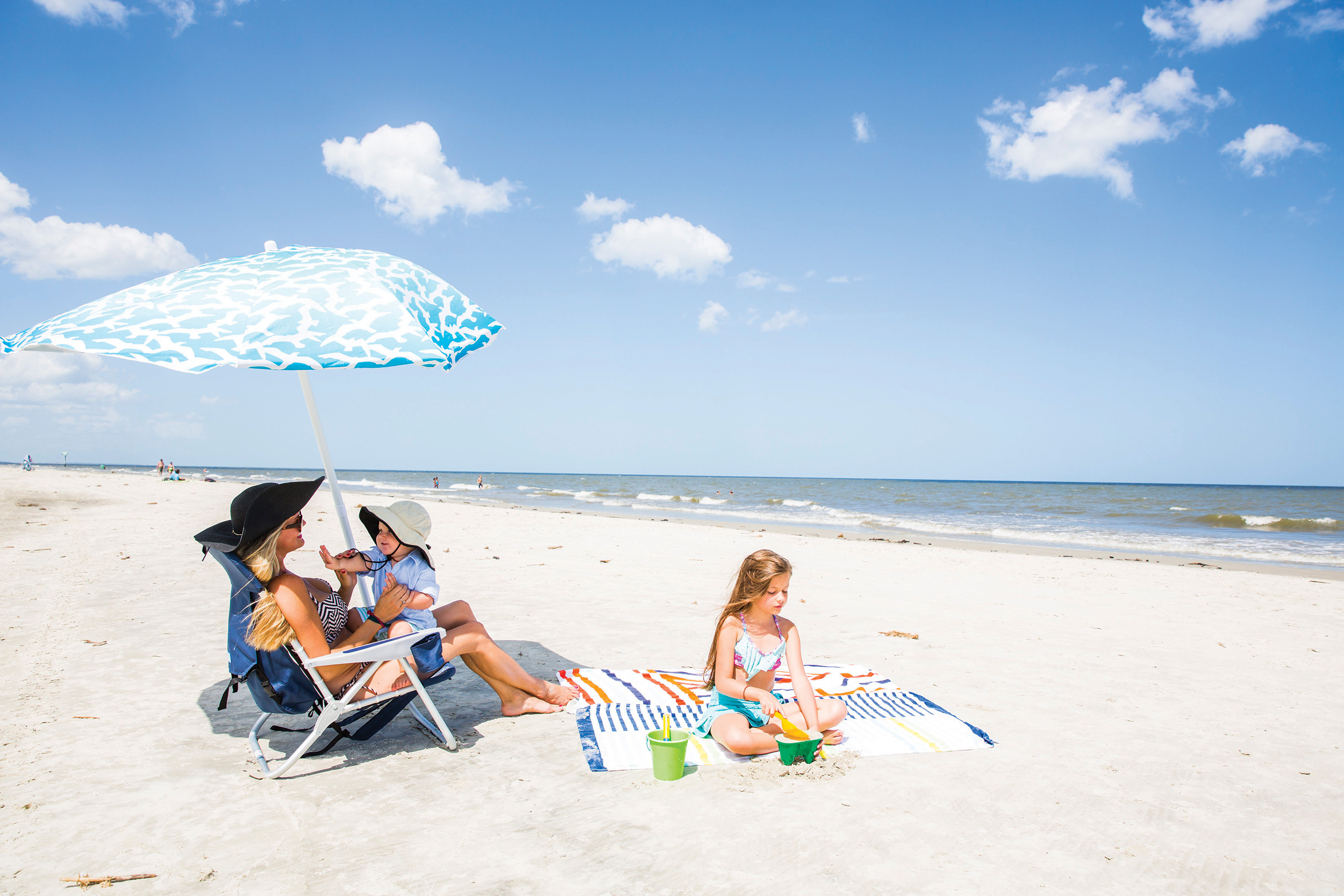
Play Date
The beach at Great Dunes Beach Park “can be one of the calmer places to get in the ocean, without the sometimes strong currents you can find on the ends of the island,” Carswell says. Great Dunes is popular for other reasons too: bathrooms, beach showers, picnic pavilions with charcoal grills, an events deck and gazebo, and ramp access through the dunes (beach-friendly wheelchairs are available for free). It’s perfect for families, especially those with small kids, and big gatherings. Summer sunshine brings sporty types to the sand volleyball pit and the enclosed turf bocce lane. And location, location, location: the public playground sits just across Beachview Drive, and the Beach Village shops and eateries are a few minutes’ stroll down the bike and pedestrian path. The park is a powerful testament to smart and eco-friendly redevelopment, with native plants incorporated into the landscape to minimize storm-water runoff. Signs near the boardwalks identify birds and sea turtles that rely on these protected dunes.
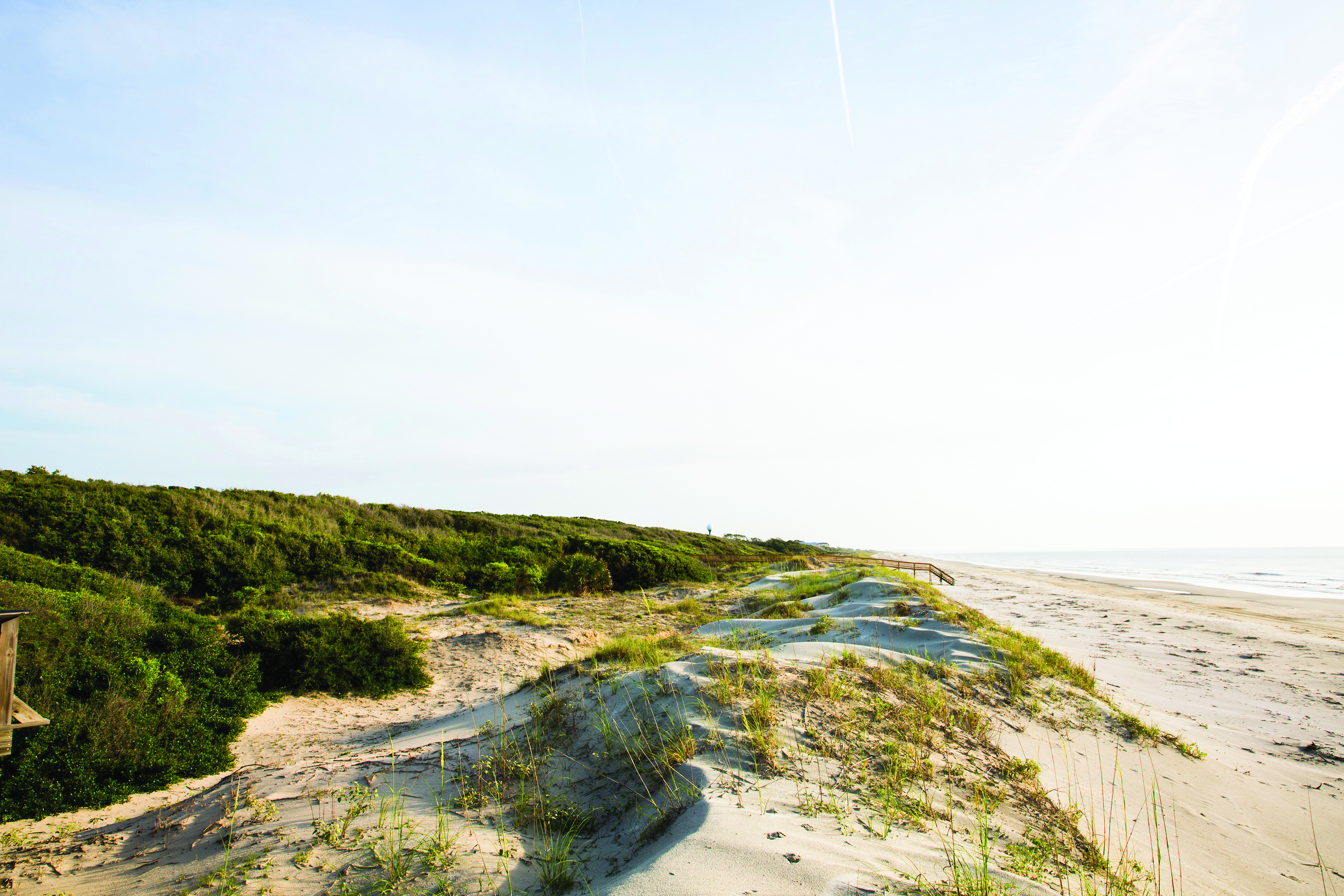
Haven
The bustle of Great Dunes gives way to quieter South Dunes Beach Park. The picnic area fronts a strip of palmettos, palms, and live oaks that anchors the dunes; go left up the stairs to the boardwalk that threads through the woods to the beach. In spring and summer, look for black skimmers, red knots, ruddy turnstones, and oystercatchers; in winter, watch the piping plover skitter. The ribs of the previous walkway, to the south, are being slowly reclaimed by the shifting dunes.
Tidal pools flow back to the sea at low tide, carving sweeping runnels across the beach that wash tiny crabs out to the gulls and royal terns (or common, Forster’s, or Caspian terns) gathered by the shoreline. Try to identify the birds you see and the tracks of four-legged critters you don’t. Bobcat? Raccoon? Gray fox? Those that fan out and back to the boardwalk belong to dogs, which are not allowed on the beach south of the picnic area.
Head to Glory Beach Park for an even more remote excursion. This stretch serves as a protected nesting area for shorebirds such as the Wilson’s plover, which Georgia lists as a threatened species. Just down from South Dunes, it honors the 1989 Civil War film Glory, whose beach scenes were filmed on-site. All the way south at Jekyll Point, where Glory Beach merges with St. Andrews Beach, the mast of the sunken Mary Ann shrimp boat peeks above the sand as it is gradually swallowed by the decay of the island’s southern tip. Here, the beach drops off steeply into the ocean, bringing frolicking dolphins and porpoises as close as fifteen feet from the shoreline at low tide.
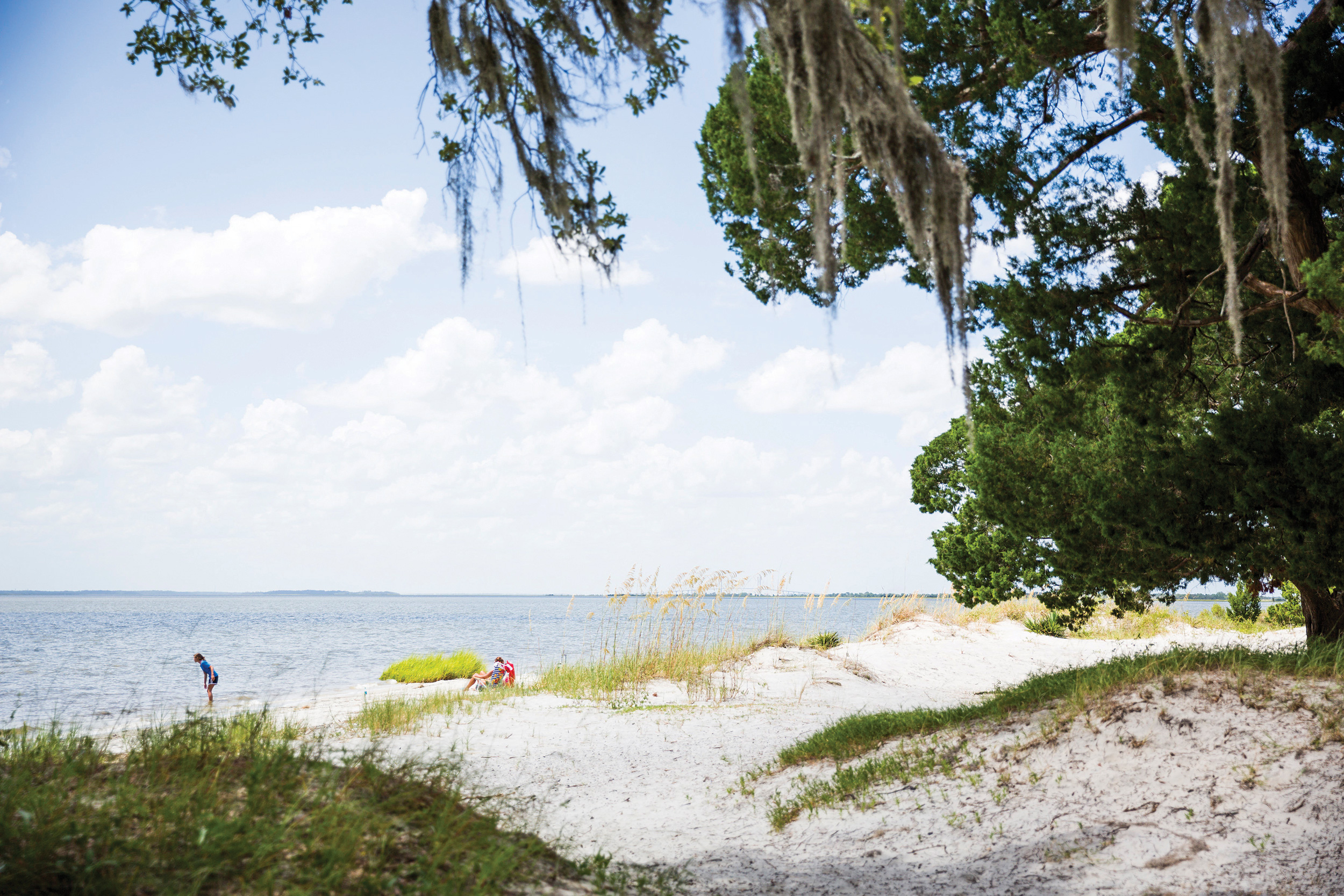
Catch
St. Andrews Beach Park stretches from Jekyll Point up the southwestern coast and is steeped in marsh tides and history. One of the last known ships to bring enslaved Africans to the United States, the Wanderer anchored here in 1858, dooming some 400 human captives to slavery. From 1950 to 1964, historic St. Andrews was the only public beach in Georgia to allow African Americans, featuring its own segregated resort and music venue, until federal civil rights laws opened all beaches to all people.
Today, high tides surge to the tree line, sculpting a stretch of wind-carved and sun-faded trees to rival the wonders at Driftwood Beach; one sprawling live oak stands upright with roots exposed as if plucked from the earth and dropped atop the sand. An interpretive trail about the Wanderer leads to a wildlife observation platform that overlooks beds of eastern oysters. Look for the tracks of cute but carnivorous mink that come down to the water to sneak away with fresh fish.
And speaking of seafood, no feast is more fulfilling than a Lowcountry boil from your own fresh catch. The mix of marsh and ocean currents yields a salty soup that nourishes shrimp, fish, and crab, making St. Andrews one of the best spots on the island for seining. Cast your line for fish year-round, but shrimping is seasonal, usually from early summer till late fall (though the 2017 season was extended into the middle of January). Make sure you have a valid Georgia fishing license and know restrictions, seasons, and limits; check information with the Coastal Resources Division (coastalgadnr.org), and buy or rent gear at the Jekyll Fishing Center on the northwestern tip of the island.

